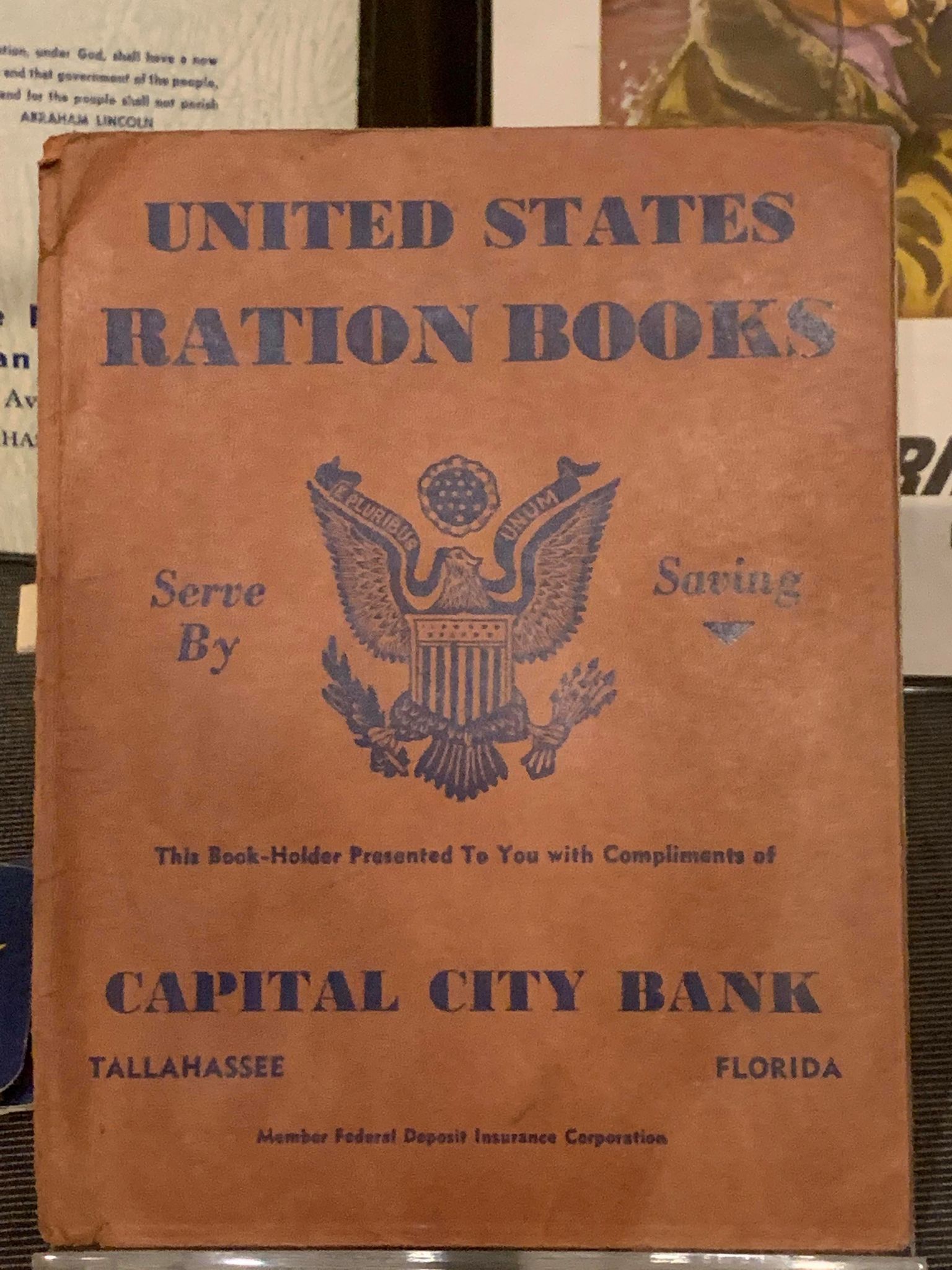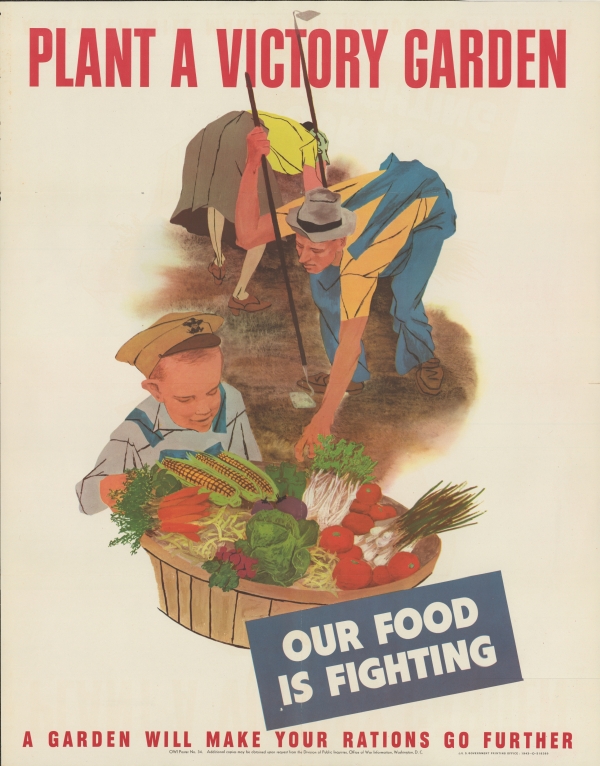WWII Food Rationing & Victory Gardens
With the country preparing itself for war the US Government wanted to ensure that their forces were supplied well, rationing helped to make that happen. War affected trading relationships and prevented access to many goods. Sugar and coffee supplies from Central and South America were threatened by German U-Boat activity and the US could no longer get rubber from trading with Japan.
The United States responded to World War II by mobilizing the resources of the entire nation to support the war effort. This included limiting the purchase of many everyday goods—such as gasoline, tires, butter, and sugar—so manufacturing and agriculture could be used for the war effort.
 To help ensure adequate material and supplies for service members overseas and fair distribution at home, the US government established a rationing system. The first product to be rationed were tires, starting in January 1942. Most of the US supply of rubber came from trade with Japan, which was no longer an option. Soon other items, such as fuel, sugar, coffee, and other food products were also rationed. To help organize this process over 5,600 rationing offices under the Office of Price Administration were created across the country. These offices issued ration books which could be used to buy goods. Each member of a household, even newborns, would receive their own book and they would have to take it with them to buy restricted goods. Inside the books there were a series of stamps with different pictures and numbers on them, such as a whole page of aircraft carriers or tanks. When shopping at your local grocer or butcher, you would have to have your ration book with you, and dependent on what was available and how many ration stamps you had left, you could buy what you wanted.
To help ensure adequate material and supplies for service members overseas and fair distribution at home, the US government established a rationing system. The first product to be rationed were tires, starting in January 1942. Most of the US supply of rubber came from trade with Japan, which was no longer an option. Soon other items, such as fuel, sugar, coffee, and other food products were also rationed. To help organize this process over 5,600 rationing offices under the Office of Price Administration were created across the country. These offices issued ration books which could be used to buy goods. Each member of a household, even newborns, would receive their own book and they would have to take it with them to buy restricted goods. Inside the books there were a series of stamps with different pictures and numbers on them, such as a whole page of aircraft carriers or tanks. When shopping at your local grocer or butcher, you would have to have your ration book with you, and dependent on what was available and how many ration stamps you had left, you could buy what you wanted.
Floridians did their part by participating in scrap metal drives and even saving rags, paper, and grease. In April 1942, sugar was rationed, and coffee, butter, meats, and other food items followed. Some consumer items, such as shoes, were also rationed.
 Many households planted “victory gardens” to supplement the food supply. Victory Gardens further freed up resources that could be sent overseas to troops and instilled a sense of patriotic duty in the community. Any who could not serve the country in a military or industrial role could still get involved in the war effort through these gardens, even children. Learn more about food rationing and victory gardens here.
Many households planted “victory gardens” to supplement the food supply. Victory Gardens further freed up resources that could be sent overseas to troops and instilled a sense of patriotic duty in the community. Any who could not serve the country in a military or industrial role could still get involved in the war effort through these gardens, even children. Learn more about food rationing and victory gardens here.
